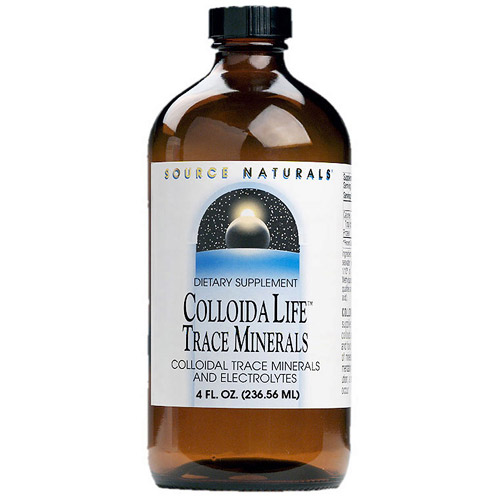What is a Trace Mineral?
Most of us are familiar with the minerals our bodies need at high levels, such as calcium, magnesium, potassium and sodium. These minerals, because they are needed by our bodies in significant amounts, are called macrominerals. A number of other minerals, required in much smaller levels by our bodies, but no less important to good overall health, are called microminerals, or more commonly trace minerals. Trace minerals are usually found at extraordinarily small levels in our bodies, in the parts per million range. In spite of the relatively low concentrations of these minerals, scientists are discovering that they play an increasingly vital role in our health, including the health of our bones and joints.
The Benefits of Trace Minerals
Do we need trace minerals?....Yes! It is a certainty that a large number of trace minerals are directly linked to good bone health. Deficiencies of certain trace minerals, such as copper and manganese, for example, have been connected to lower bone density and weaker bones. While everyone is aware of the benefit calcium has on bone health, studies show that supplementing with calcium and trace minerals together increases bone density in post-menopausal women more than calcium alone. Calcium alone is not enough Americans!
Chromium
Chromium (Cr) is implicated in maintenance of blood sugar, prevention of atherosclerosis, and control of cholesterol levels. Human studies suggest that a particular form of chromium known as chromium picolinate, enhances insulin sensitivity, glucose removal, and may improve lipid ratios in obese and type 2 diabetics. Additionally, it is suggested that chromium has a potential beneficial antioxidant effect in patients with type 2 diabetes when combined with zinc and copper supplementation. Chromium is found in some foods, in small amounts. Because of this, supplementation with chromium can have positive health implications.
Manganese
Manganese (Mn) is a component of several enzyme systems, including manganese-specific glycosyltransferases and phosphoenolpyruvate carboxykinase, and is essential for normal bone structure. Unrefined cereals, green leafy vegetables, and black tea are the richest dietary sources of manganese. Unfortunately, the refinement of grains has lead to widespread inadequacies in the daily intake of manganese from our diet. Manganese deficiency can manifest as transient dermatitis, hypocholesterolemia, and an increased liver enzyme (alkaline phosphatase) levels.
Selenium
Selenium (Se) is a part of the enzyme glutathione peroxidase, which metabolizes free radicals formed from the oxidation of polyunsaturated fatty acids. Selenium is also a part of the enzymes that deiodinate thyroid hormones, assisting the body’s use of this hormone. Selenium functions as an antioxidant that works in conjunction with vitamin E. One study determined that head and neck cancer patients had serum selenium levels that were significantly lower compared with controls, and these levels decreased further as their tumor burden increased.
Molybdenum
Molybdenum (Mo) is a transition metal that forms oxides and is a component of a coenzyme that is essential for the activity of xanthine oxidase, sulfite oxidase, and aldehyde oxidase. Molybdenum is derived principally from organ meats, whole-grain cereals, and legumes. Molybdenum may possibly retard degenerative diseases, cancer and aging. Molybdenum acts as a detoxification agent in the liver as a part of the sulfite oxidase enzyme, which destroys sulfite, a common preservative in foods and drugs.
Vanadium
Vanadium (V) has a significant role in inducing the production of reduced glutathione content in the liver and specific extrahepatic tissues.Additionally, vanadium increases the activity of the detoxifying enzyme system glutathione S-transferase in liver and in several extrahepatic tissues. Because of vanadium’s ability to induce an increase of detoxifying enzyme activity, vanadium might be considered a potential cancer chemopreventive agent. Vanadium appears to function like insulin by altering cell membrane function for ion transport processes, increasing insulin receptor sensitivity. Vanadium may also inhibit cholesterol synthesis in animals and humans resulting in decreased plasma levels.
Copper
Copper (Cu) is a universally important cofactor for many hundreds of enzymes. Copper functions as a co-factor and activator of numerous enzymes that are involved in the development and maintenance of the cardiovascular system. Copper is essential for the function of reduced lysyl oxidase activity, which causes a conversion of the connective tissue element pro-elastin to elastin. A copper deficiency can result in a decrease in the tinsel strength of arterial walls, leading to aneurysm formation and skeletal maldevelopment. Other effects of copper deficiency are anemia (iron storage disease can result from chronic copper deficiency), poor hair keratinization and hypopigmentation.
Story Source:
The above story is reprinted (with editorial adaptations by Well and Good staff) from materials provided by University of California -- Berkeley.
Journal Reference:






No comments:
Post a Comment